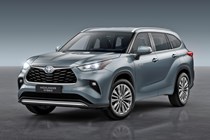In a consummate display of line-up completion, further details of the Toyota Highlander – another hybrid-powered large family SUV from the Japanese firm – have been confirmed.
While the recently revealed Yaris Cross fulfils that brief at the smaller end of the range, the new Highlander you see in these pictures is at the other end of the size scale. Only the non-hybrid Land Cruiser is larger in Toyota’s range.
Strictly speaking, the Highlander is not new. This is the fourth-generation model – confusingly also known as the Toyota Kluger in some parts of the world – and was first revealed at the New York motor show in April 2019.
Nevertheless, it’s the first time it’s been sold in Western Europe, so it’s a fresh model over here.
What do we know so far?
Building upon Toyota’s expertise in hybrid technology, the Highlander combines electrical power with a 2.5-litre petrol engine, producing 248hp.
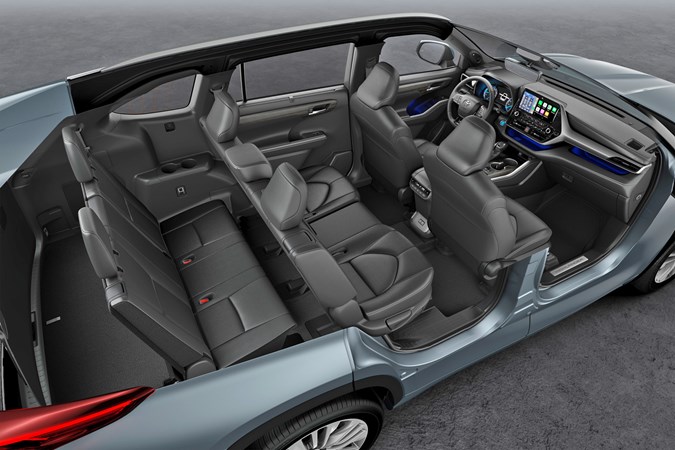
That should ensure that the Highlander is fairly swift, yet Toyota is claiming CO2 emissions as low as 159g/km under the latest WLTP test cycle.
Employing Toyota’s marketing speak, this is a self-charging hybrid, meaning it doesn’t get plugged in to charge the batteries. Despite the Highlander’s styling suggesting otherwise, off-roading isn’t likely to be on the agenda, although all-wheel drive (AWD) is standard.
Will the Highlander be good to drive?
It’s too soon to know for sure, but given that it’s based on underpinnings we rate highly – the GA-K platform, for technology geeks – the handling should be impressive for this kind of car, even though the focus will be on comfort.
We expect something of a sense of the Camry Saloon in terms of refinement, which means it should be relaxing and quiet for the most part – particularly when driven in electric-only mode for brief spells.
In addition to the ability to switch between hybrid and electric-only driving, there are four other drive modes: Eco, Normal, Sport and Trail. The latter will adjust the parameters to extract the most from the system when traction is limited, rather than venturing through Himalayan base camps.
Is the Highlander spacious?
Again, the omens are good here that the Highlander will be roomy – not least because it measures 4,950mm in length.
Toyota states that it will seat seven adults in comfort – not something you can completely manage with rivals such as the Hyundai Santa Fe, Peugeot 5008, SEAT Tarraco or Skoda Kodiaq. We’ll know for sure when we test it.
Aiding access to the rearmost seats, the middle row slides forwards by 180mm, despite the hybrid’s battery packs being mounted underneath.
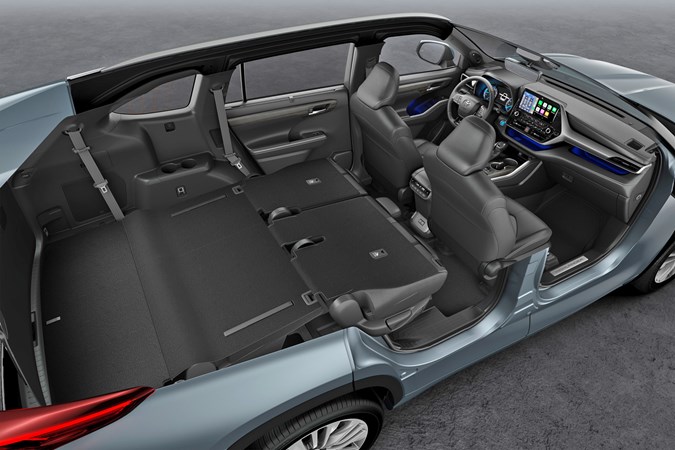
Toyota hasn’t quoted a bootspace capacity when the third row is in use – 658 litres sounds like when it’s in five-seater mode to us – but all five back seats look to fold flat, resulting in a 1,909-litre cargo bay.
High levels of equipment promised
Toyota is offering the Highlander in just two trim levels in the UK: Excel and Excel Premium.
Excel versions are bristling with standard kit – this is no cheap and not very cheerful base model at £50,595. Features include 20-inch alloy wheels, leather upholstery, a glazed panoramic roof, three-zone climate control and a high-end JBL sound system.
Progress to the Excel Premium and your extra £1,980 outlay buys you a head-up display (HUD), heated rear seats, an electric tailgate, 360-degree parking cameras and a different design of 20-inch alloy wheels.
As Toyota has yet to confirm the specifications in full, it’s not currently clear whether both models will also feature Android Auto and Apple CarPlay functions, wireless smartphone charging, ventilated seats in the front, and a rear-view mirror that projects a camera image of what’s going on behind if your vision’s restricted by people in the back.
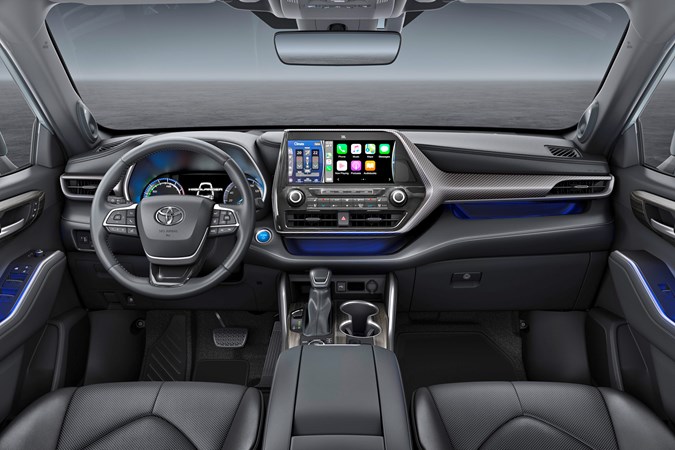
Safety equipment is set to include Toyota’s latest ensemble of safety equipment automatic emergency braking (AEB), adaptive cruise control and automatic main beam headlamps among a suite of other features.
What this means for you
While the Highlander certainly isn’t cheap to buy, it should prove to be moderately priced to run, particularly if its destined for shorter urban journeys where it will have a distinct advantage over diesel versions of competitors’ cars.
How Toyota has achieved it is still to be confirmed, but the more expensive Excel Premium version has lower emissions than the Excel – 159g/km of CO2 versus 160g/km. Lower CO2 figures are often achieved by fitting smaller wheels, but given each runs on 20-inch rims there must be some kind of aerodynamic difference to reduce wind resistence on the pricer version.
Either way, the Excel Premium is in the 34% Benefit-in-Kind (BIK) tax bracket for company car drivers as a result, while the Excel falls into the 35% band – that rather makes the former the default choice, given the extra equipment.
Both versions are available to order now with the first examples expected to reach customers in March 2021.
Keep this page bookmarked for further information as we have it.
Further reading:
>> We rate the best hybrid SUVs on sale right now
>> Read our Toyota C-HR review to discover why we rate it so highly
>> Find out how much your car’s worth with a Parkers valuation
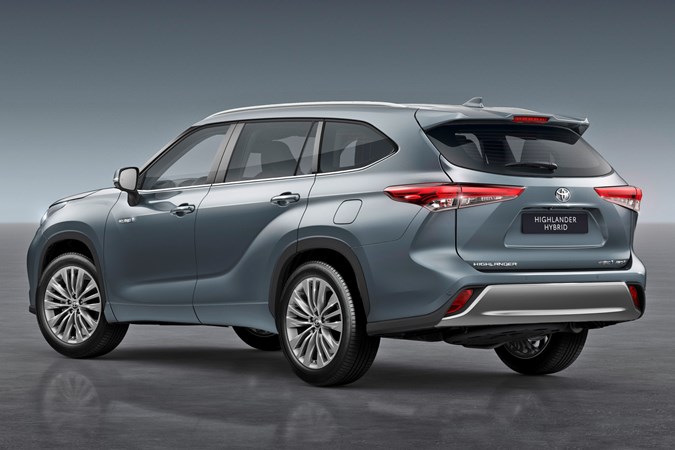
Just so you know, we may receive a commission or other compensation from the links on this website - read why you should trust us.



